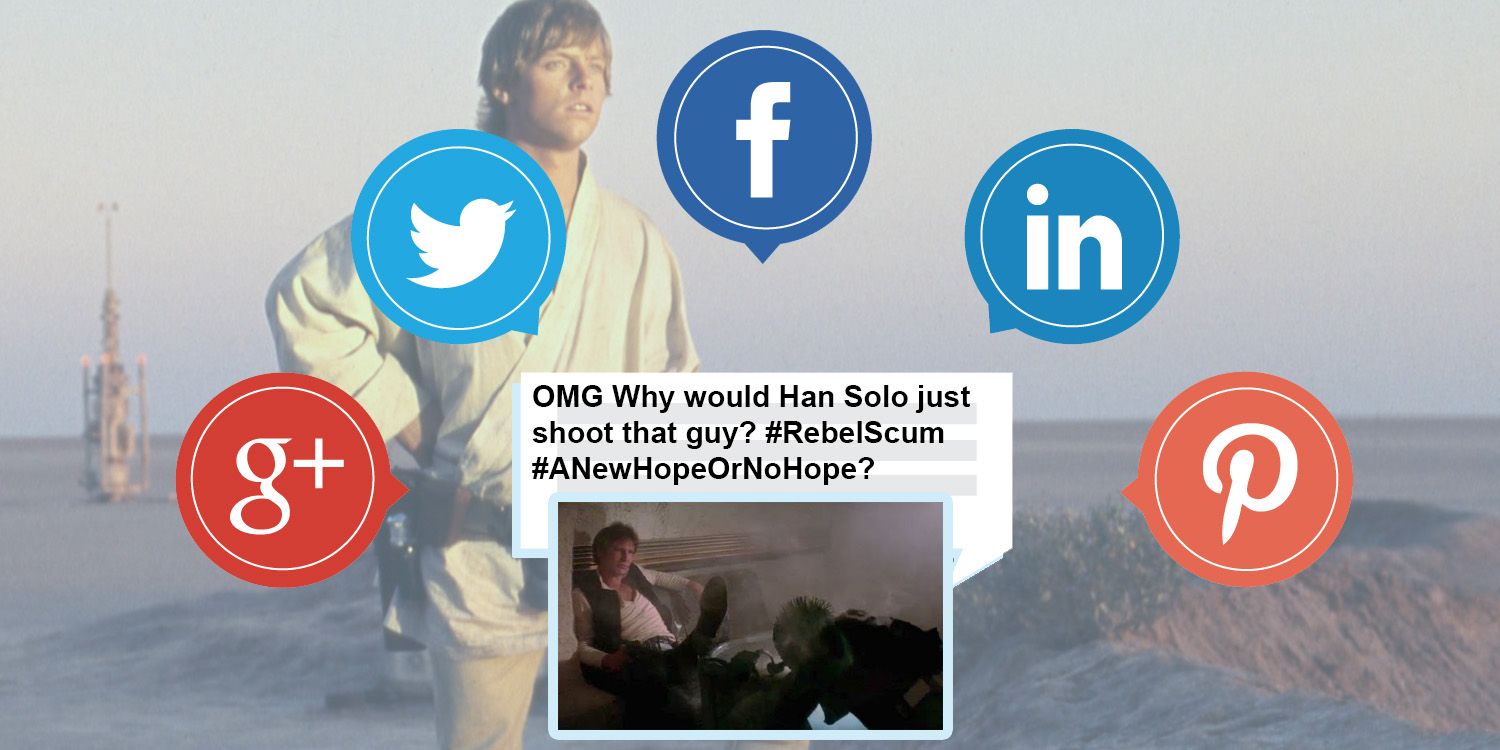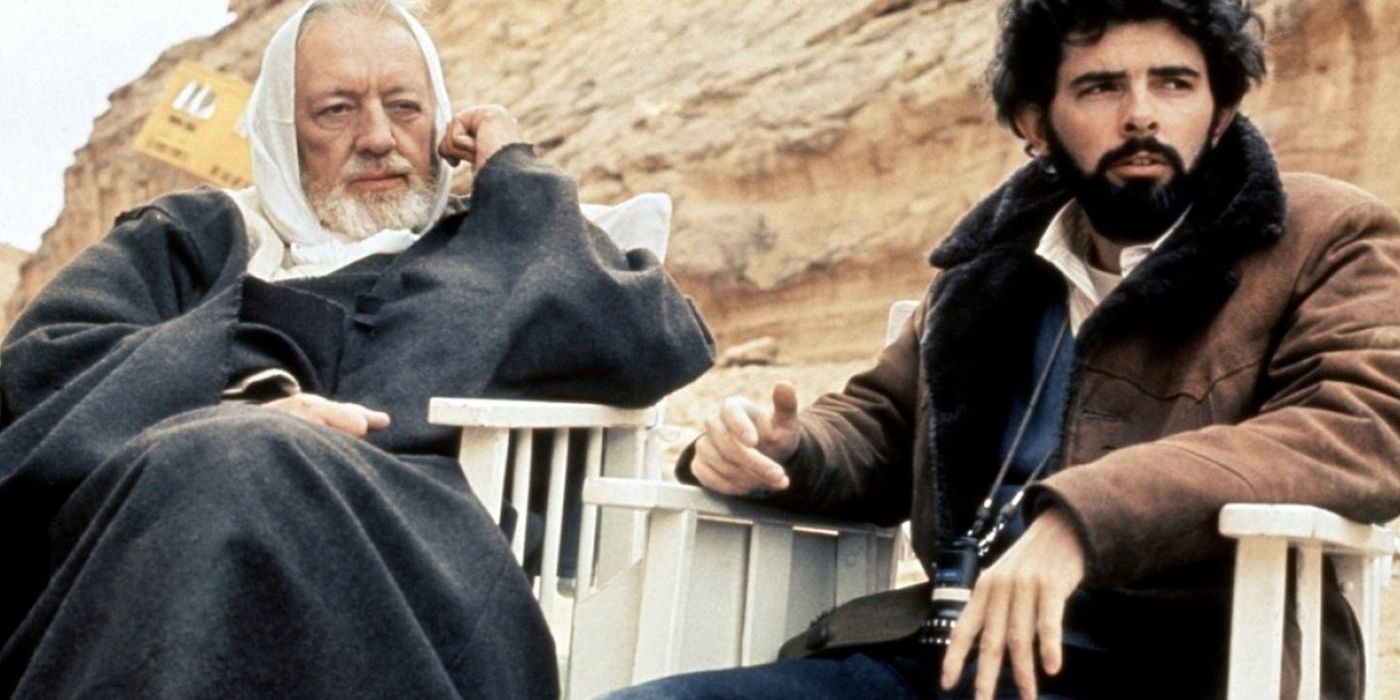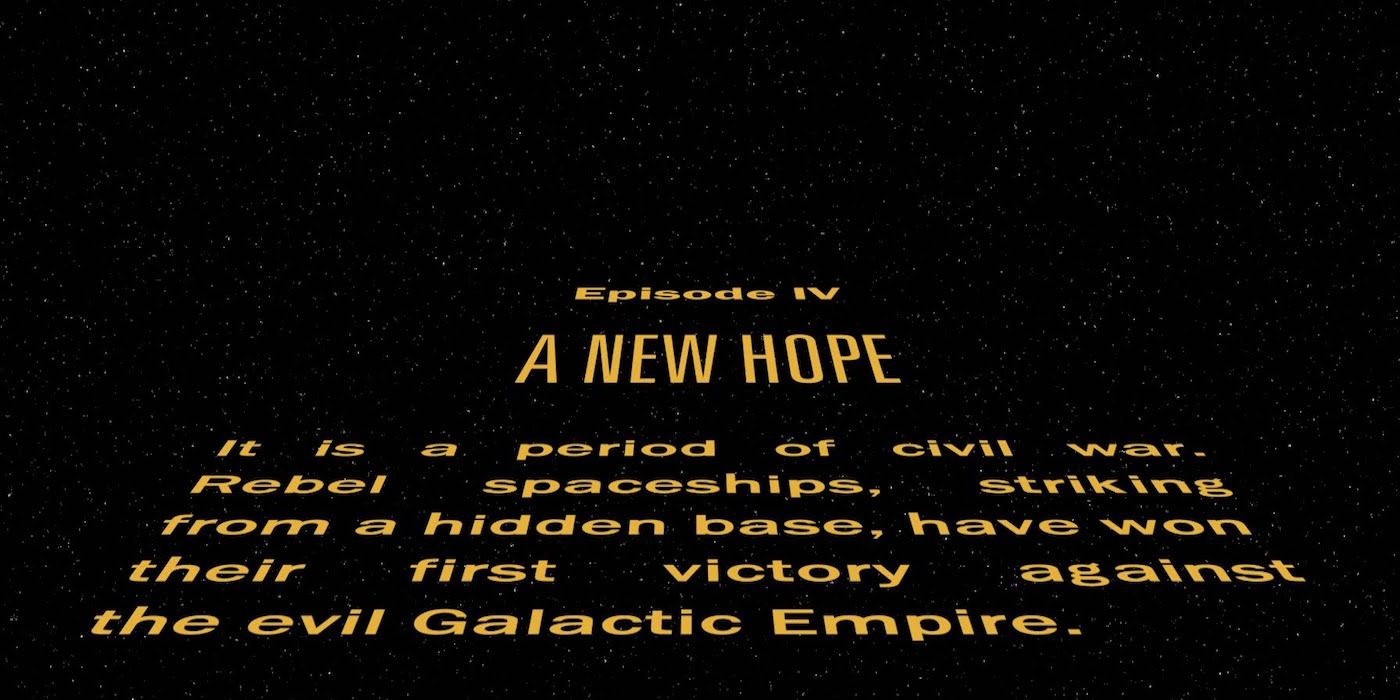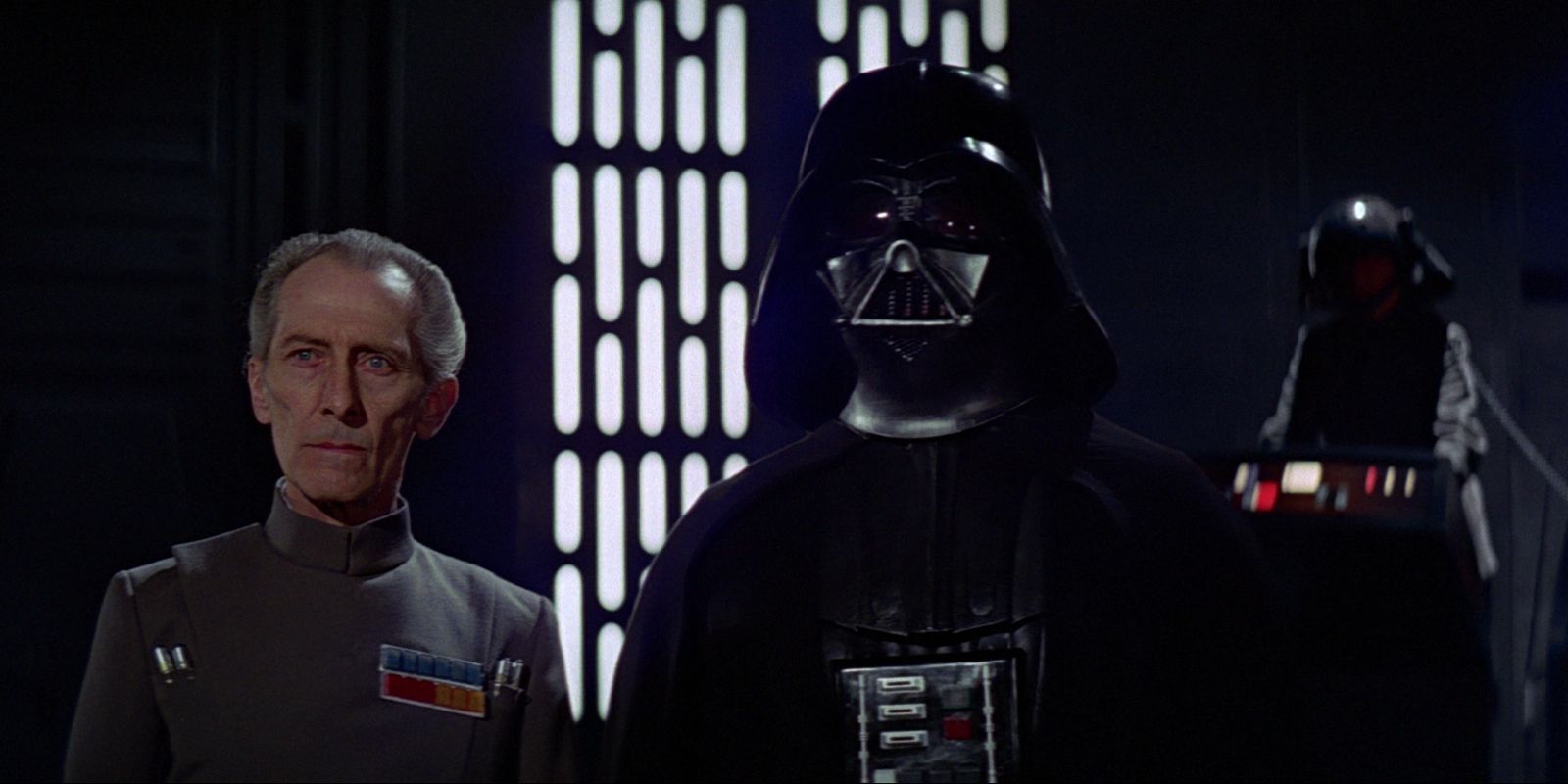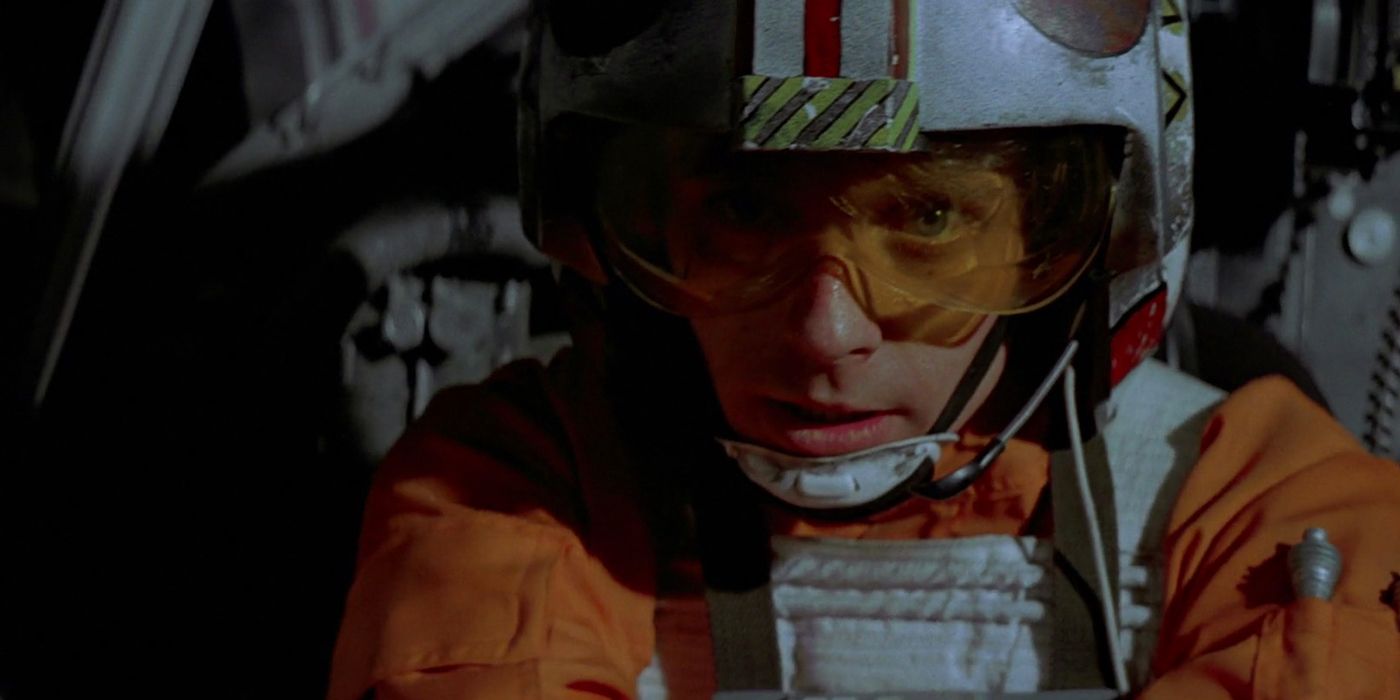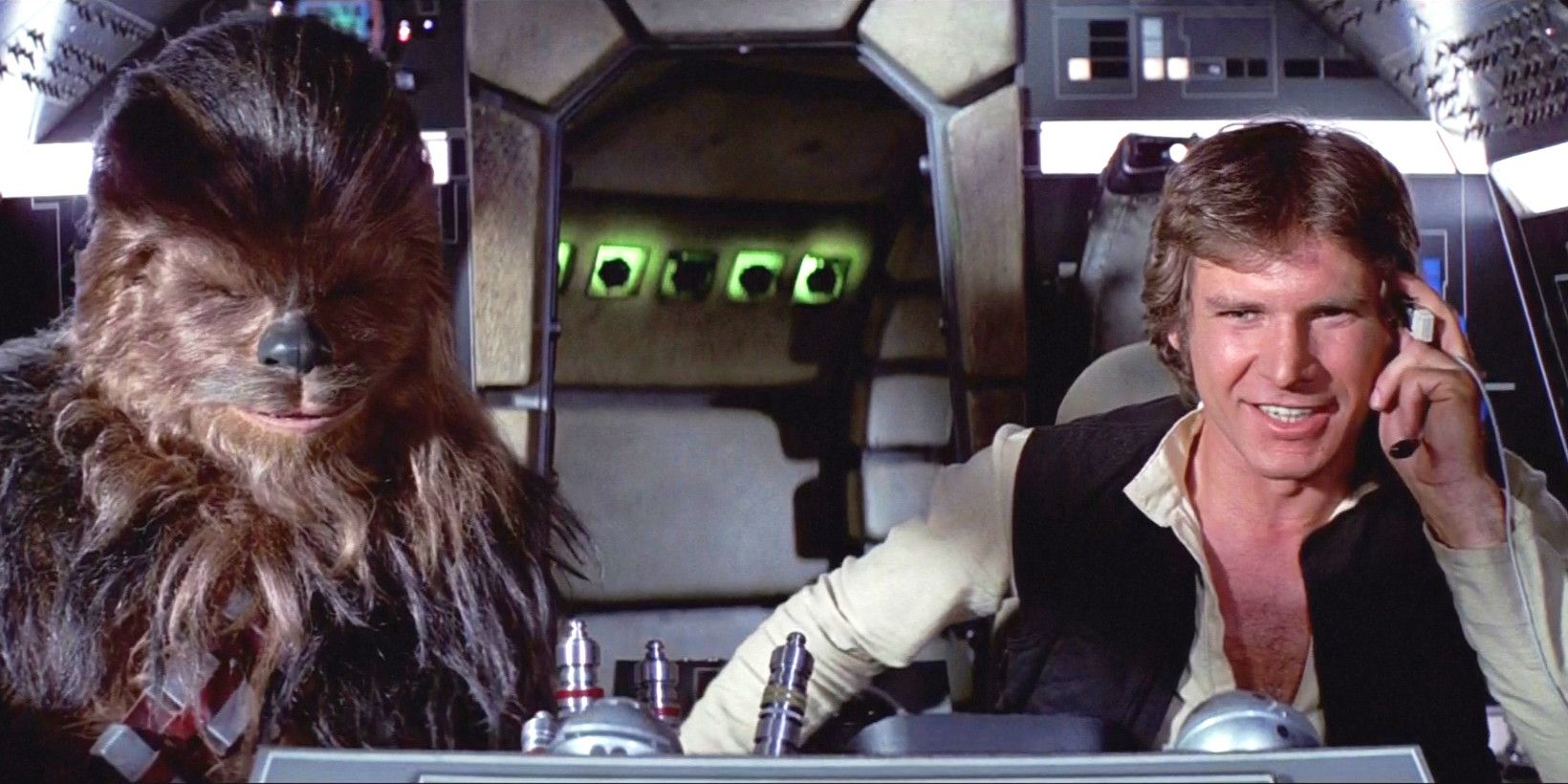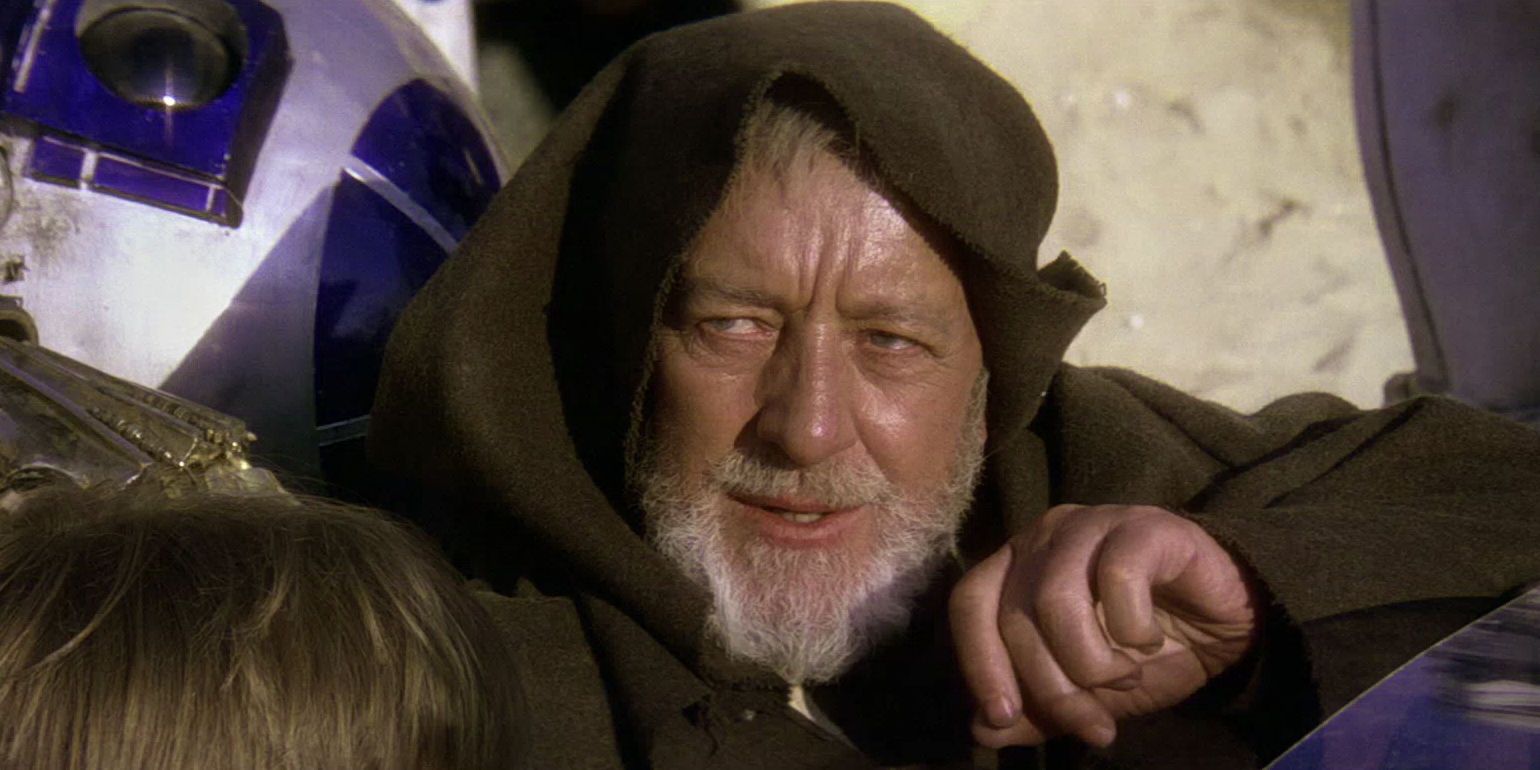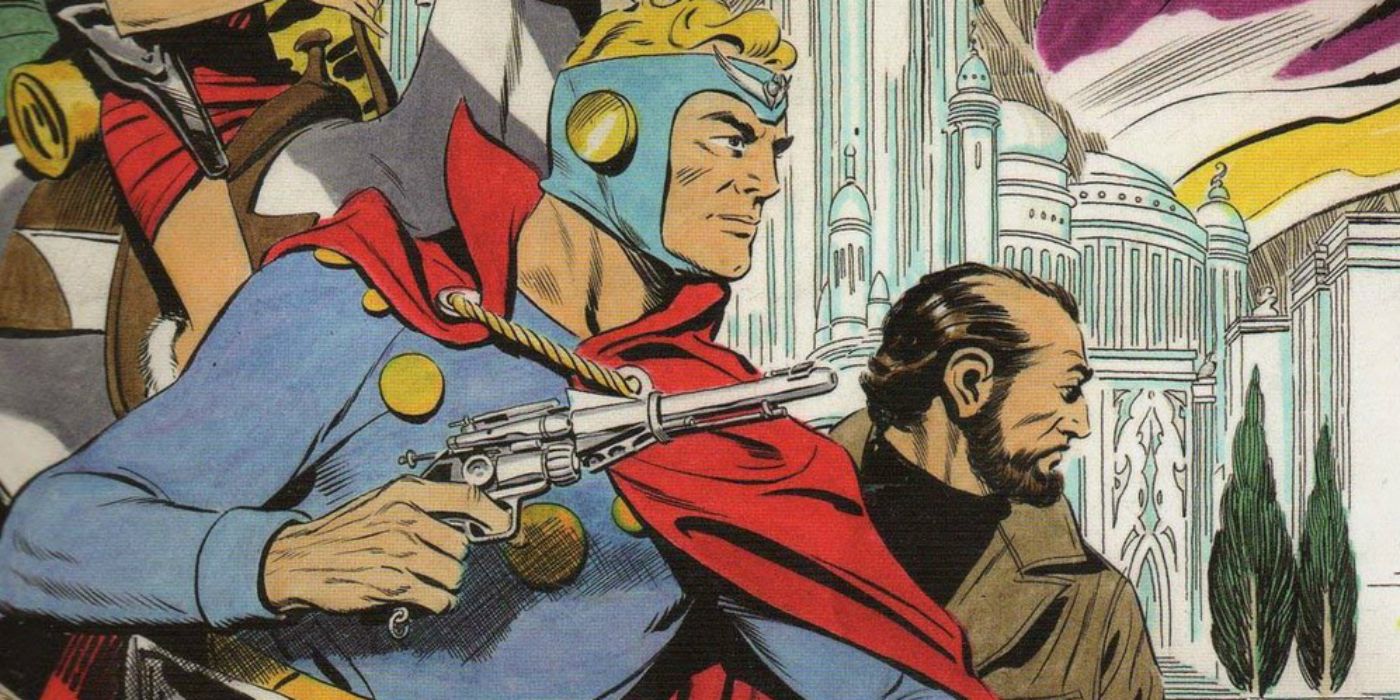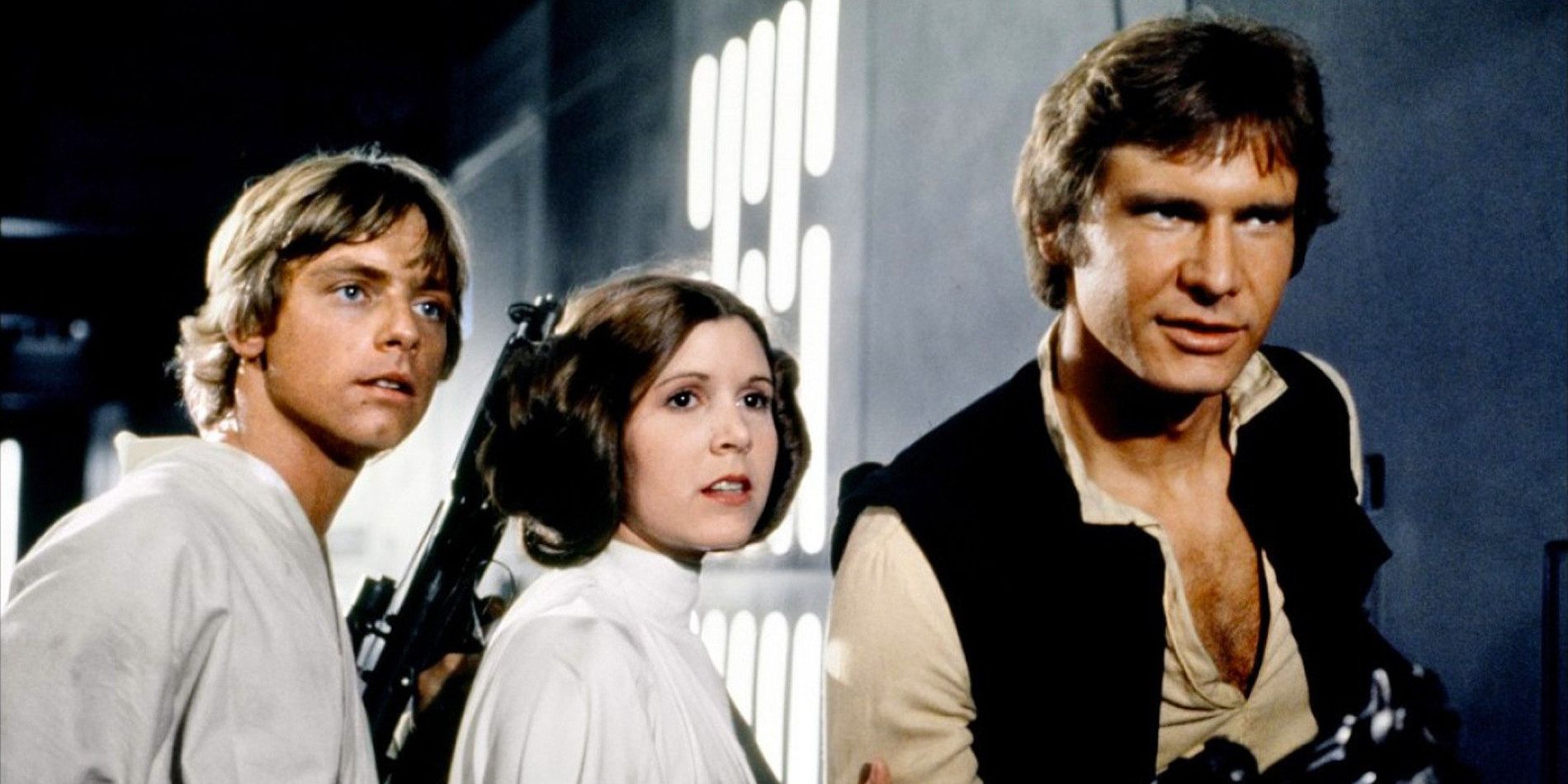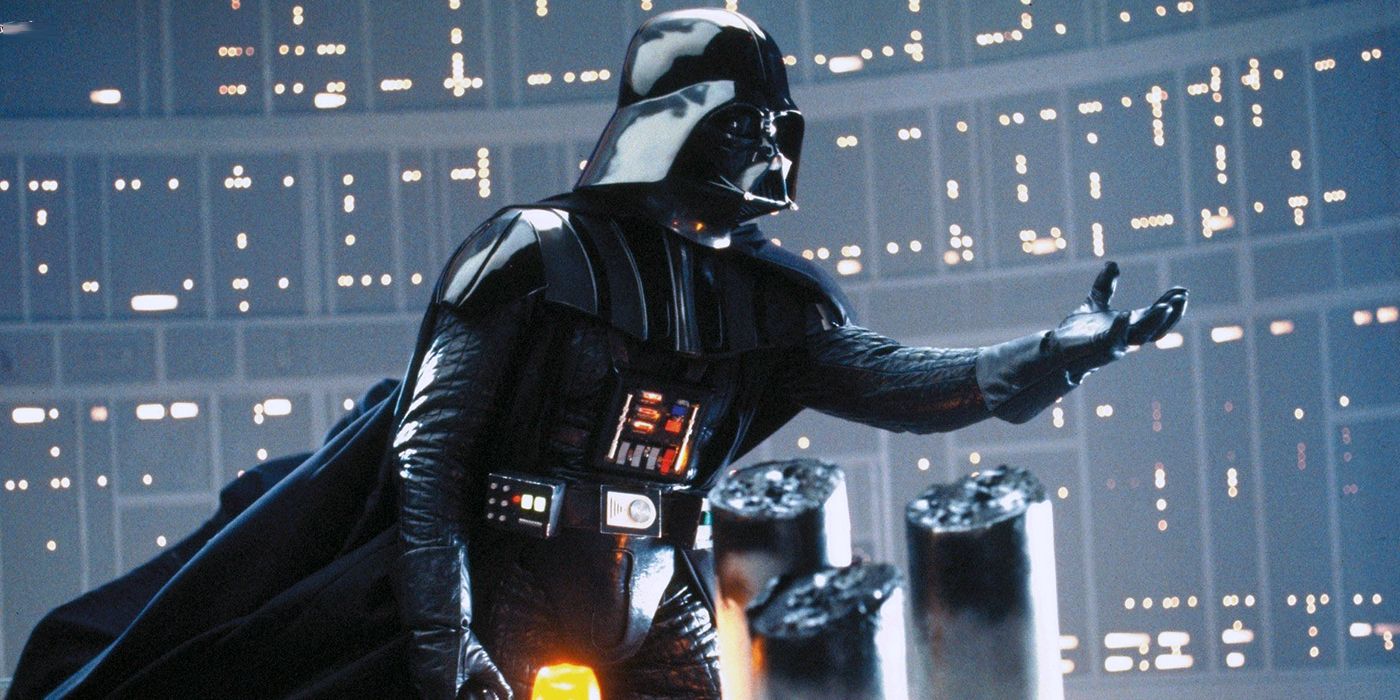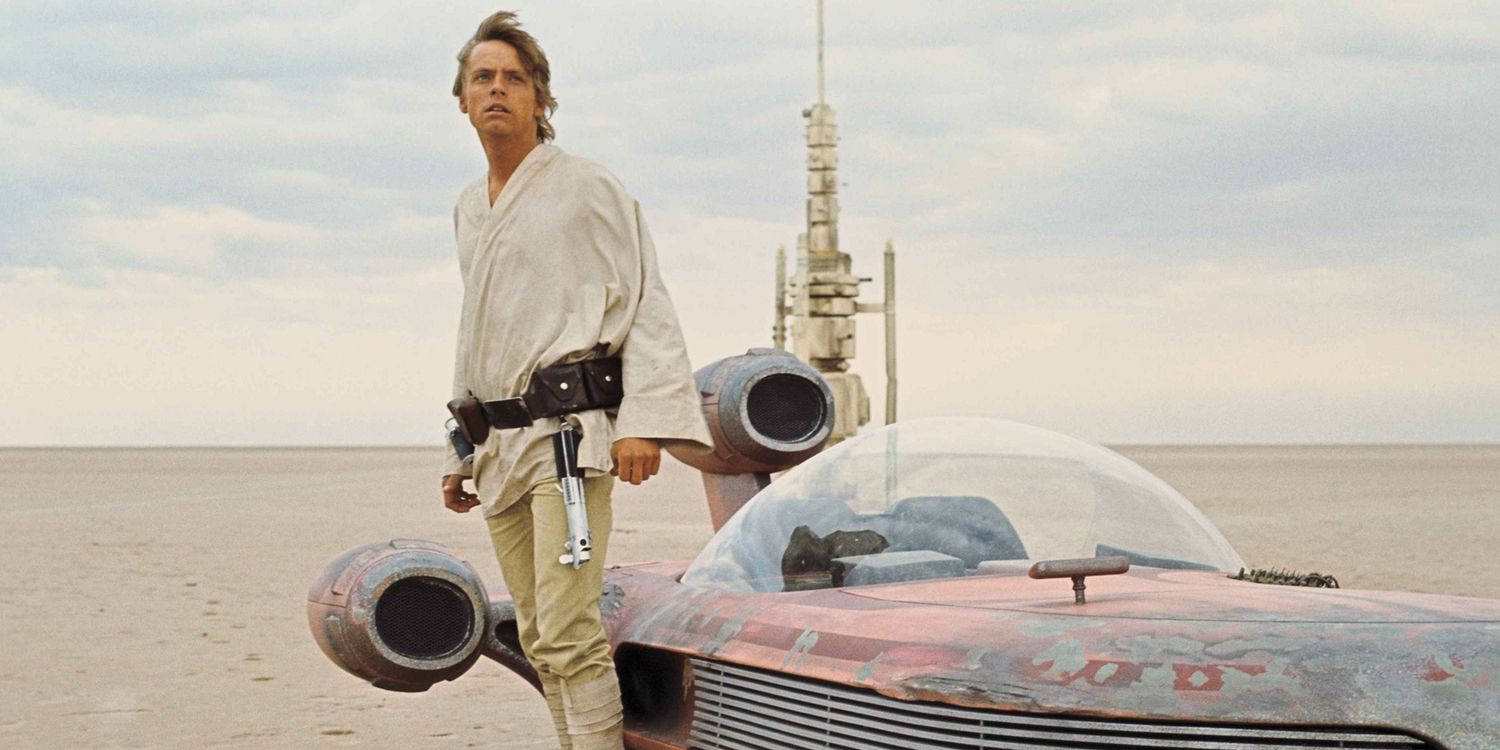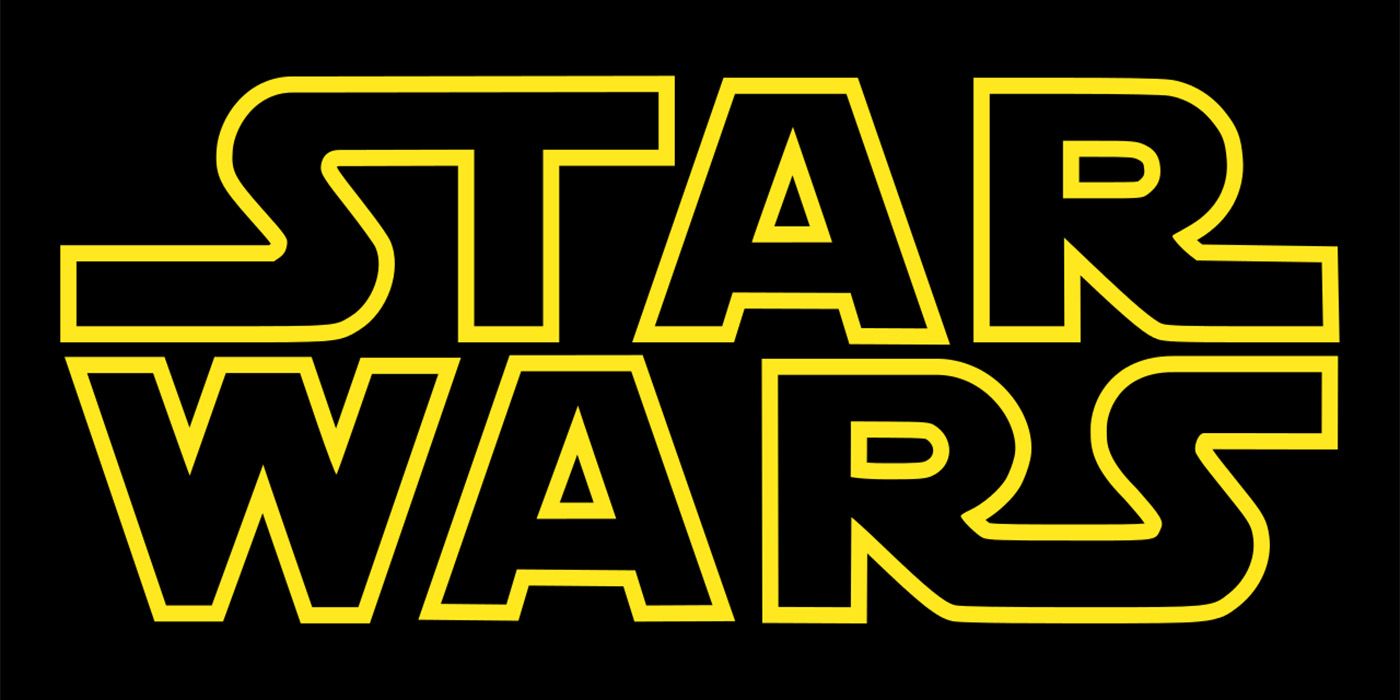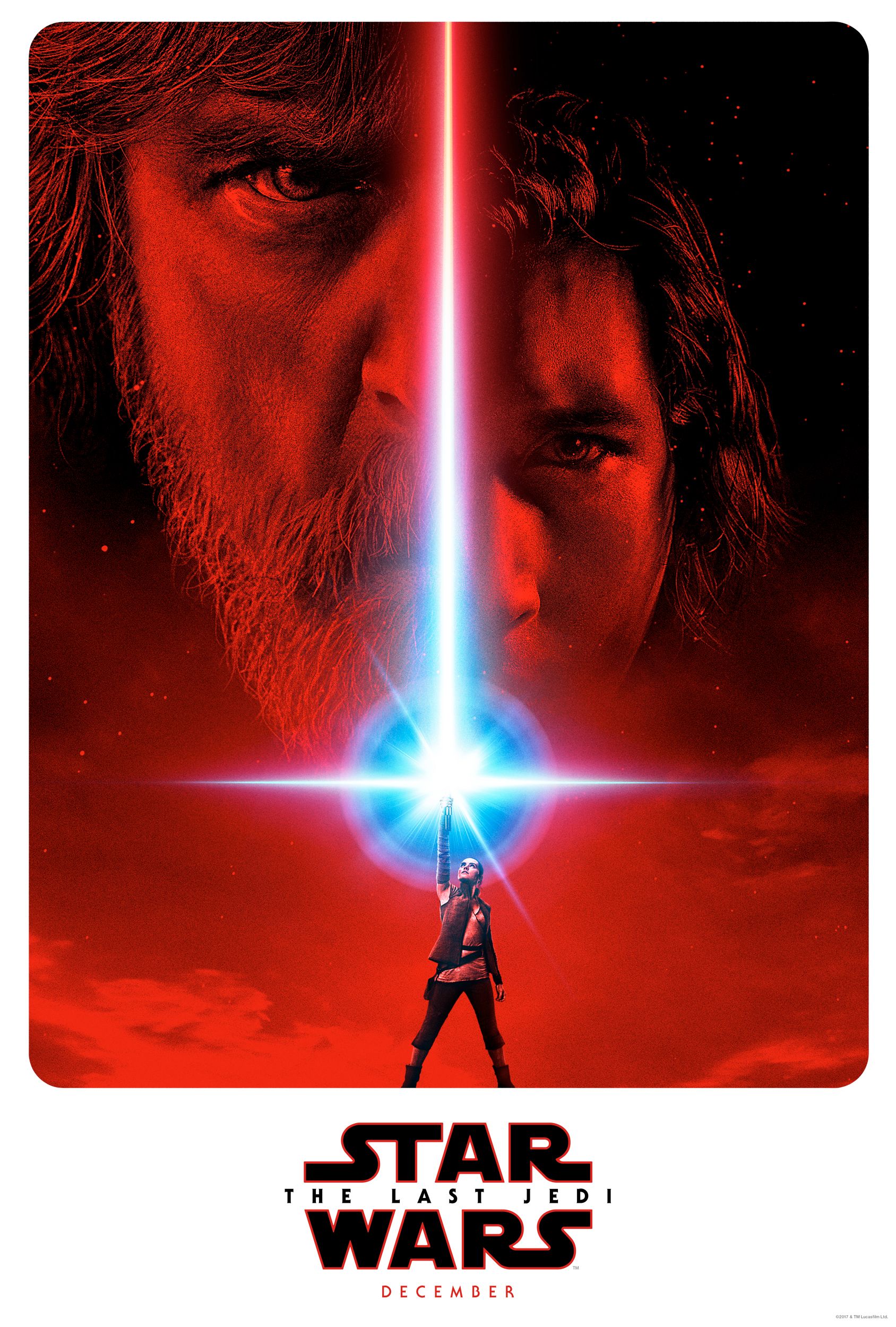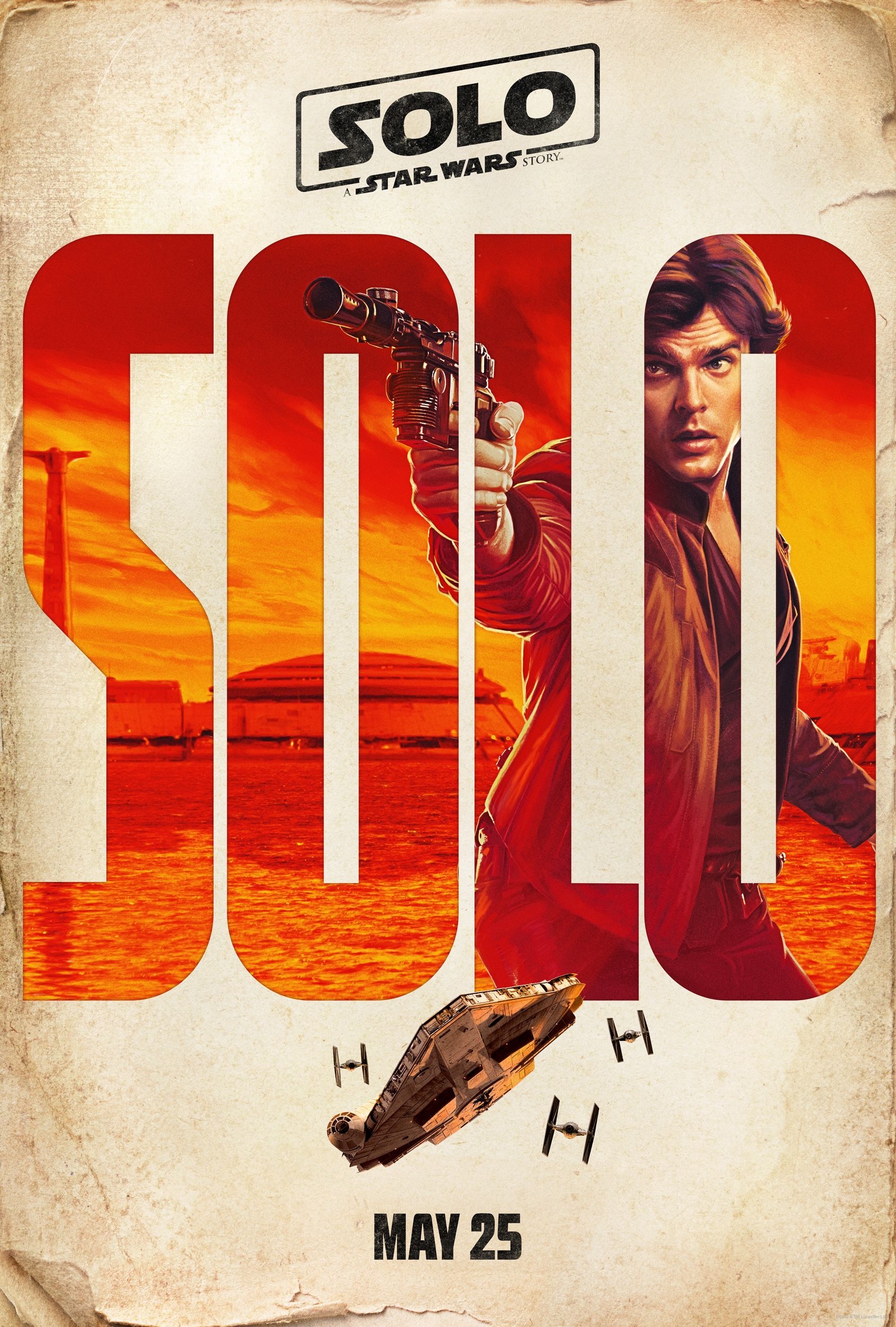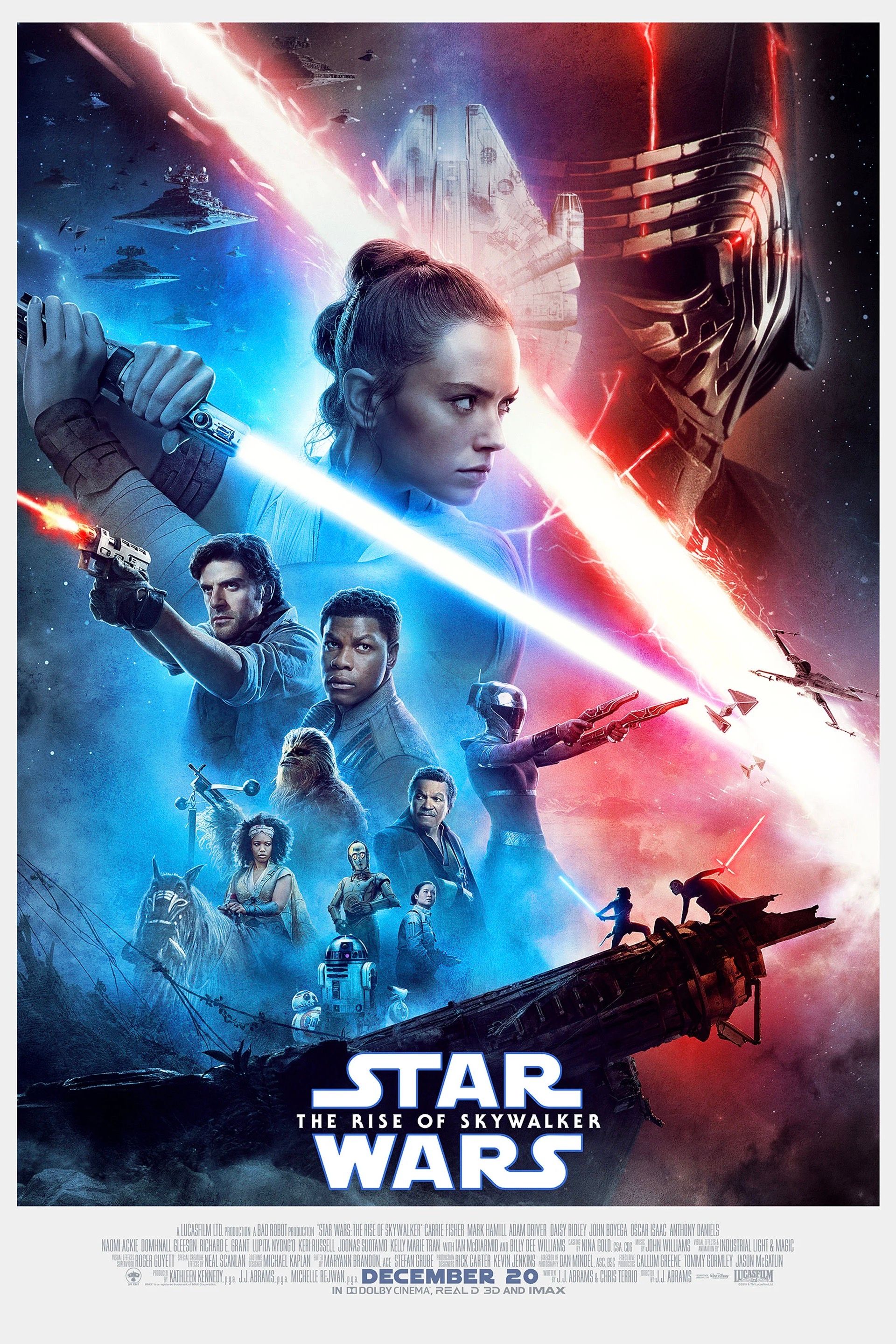Star Wars is hailed as one of the best films ever made, but what would the reaction be if it came out today? Forty years ago, George Lucas' strange space opera was released in theaters and changed the industry forever. Thanks to revolutionary visual effects, magical storytelling, and memorable characters, the movie became a pop culture phenomenon and legions of fans remain obsessed with the galaxy far, far away to this day. Disney's acquisition of Lucasfilm back in 2012 reaffirmed Star Wars' status as one of the premier franchises in the business, as illustrated by the astronomical merchandise sales and broken box office records. The Mouse House's first Star Wars film, 2015's The Force Awakens, is the highest-grossing movie of all-time domestically.
Both Episode VII and last year's spinoff Rogue One were largely successful in the eyes of critics and fans, but that doesn't mean they aren't without their detractors. As part of one of the most influential properties ever, the two films have been heavily analyzed and hit with various critiques (some valid, some that are nitpicks) as fans judge them against what has come before. But how would the original Star Wars film from 1977 hold up if social media was around and prevalent back then like it is in the 21st century? In honor of A New Hope's 40th anniversary, we're going to do just that. Some people were quite harsh to the the movie back when it premiered, so Star Wars isn't untouchable.
Movie Is Doomed Due to Production Woes
Star Wars had one of the more troubled productions of all-time, as Lucas and his crew dealt with horrible weather conditions, malfunctioning props, and a cast that barely took the material seriously. Fledgling visual effect company Industrial Light & Magic was attempting to pull off shots that had never been done before, and blew most of their budget on sequences that were deemed unusable. It seemed like every day brought a new problem for Lucas, who was under tremendous stress and pressure with limited support from the studio executives bankrolling his strange little odyssey.
News about the difficulties Star Wars faced would spread like wildfire in an era of social media (just look at the reaction to Rogue One's reshoots), and many viewers would probably become doubtful of the project entirely. Even if an advertising campaign managed to intrigue, the clouds of negativity might be too much for some people. A New Hope would be facing an uphill battle against the headlines, causing some to proclaim doom and gloom months before it reached theaters. And unlike Rogue One, which had decades of fan support and nostalgia to help viewers get through the trying times, Star Wars was something completely new and nobody had an emotional connection to it, so they'd look at it as a weird thing without much going for it.
The Story Lacks Context
A common complaint viewers had after Episode VII was that the film failed to do an adequate job of setting up the state of the galaxy 30 years after Return of the Jedi. J.J. Abrams just thrust audiences into the middle of a conflict between the Resistance and the First Order with only the opening text crawl serving as the setup. Moviegoers learned all of the information they absolutely needed for Force Awakens to make sense, but never elaborated beyond that. How the First Order rose from the ashes of the old Empire and why General Leia Organa formed a Resistance against them was a mystery left to be answered in the story group's many non-movie canon materials.
The same thing can arguably be said for Star Wars. In the crawl, we read that the Rebel Alliance is currently in a civil war with the evil Galactic Empire, and the villains are in possession of a weapon powerful enough to destroy an entire planet. Any background information is virtually non-existent. Based solely on A New Hope, we have no idea how the Emperor rose to power and why so many people oppose his rule. Lucas did an excellent job incorporating visual cues to indicate the Imperials were the antagonists (and not simply a normal government dealing with a troublesome uprising), but as Abrams did many years later, Lucas set his story in the middle of a war and dropped us right in the heat of the action. Many years later he would go back to fill in the gaps, but that's another story.
Darth Vader Is A Weak Villain
Despite ordering the deaths of several innocent villagers, torturing his prisoners by reading their mind with the Force, and committing a heinous act of patricide to sink deeper into the Dark Side, some felt that Kylo Ren was an unworthy successor to Darth Vader because of his whiny demeanor and tendency to throw temper tantrums when things don't go his way. It's amusing to think what the reaction would be to Darth Vader if he was introduced to moviegoers now instead of four decades ago. When one compares Episode IV and Episode VII, the argument can be made the former Ben Solo is a more realized character. Vader looks undeniably cool in his suit, but he's thinly written.
Obi-Wan Kenobi does tell Luke Skywalker that Darth Vader was his former apprentice and killed Anakin Skywalker, but for the most part, Vader is merely an enforcer type who stands around and is actually a subordinate to Grand Moff Tarkin. The Sith's biggest action sequence is an awkwardly choreographed sword fight with an old man, and while he does destroy some X-wings during the Battle of Yavin, he's wiped out when his wingman is shot down by Han Solo. The sequels and Rogue One would help cement Vader's status as one of the premier cinematic antagonists, but he really wasn't much to write home about when he first burst on the scene. Twelve short minutes of screen time will do that to a character.
Next Page: [valnet-url-page page=2 paginated=0 text='Luke%27s%20Force%20Powers%20%26%20Story%20Conveniences']
Luke's Force Powers
Rey was almost instantly anointed this galaxy's Mary Sue due to her tremendous skill set and quick adeptness at developing Force powers. While Luke Skywalker didn't necessarily progress as quickly as his future apprentice, he still had quite a journey in A New Hope. When audiences met the farm boy, he was a talented pilot but never left Tatooine, dreaming what life beyond the twin suns could be like. A short escape from a Death Star later, Luke is flying an X-wing (a vehicle he presumably never saw before) through a narrow Death Star trench and using the Force instead of a targeting computer to deliver the killing blow to the battle station. He didn't even know what the Force was a couple days prior to his grand adventure and he saved the galaxy with it.
Luke also picked up on lightsaber wielding pretty fast as well. While en route to Alderaan, Skywalker did a short exercise with Obi-Wan and after a brief struggle was able to deflect remote shots with the blast shield down on his helmet. It's true that Luke is the son of a powerful Jedi Knight, which could offer an explanation, but he received minimal training at most in the original film. In fact, facing the Millennium Falcon remote is the only practice Luke has on-screen with the laser sword. Extending this to the rest of the original trilogy, Yoda never teaches him fighting techniques in Empire Strikes Back, but Luke still duels with Darth Vader at the end of the film. Maybe one doesn't need extensive training to use the Force?
Story Conveniences In The Script
One of the calling cards of Star Wars (and most films in general) is convenience. In order for the movie to happen, sometimes great coincidences need to take place. Somehow, Rey stumbled across BB-8 and rescued him. By a miracle, Finn wandered from the TIE fighter crash site to Niima Outpost and encountered Rey and the droid that belonged to Poe Dameron. Han Solo and Chewbacca are able to detect the Falcon on their scanners and reclaim the ship as their own moments after it leaves Jakku. Some die-hard fans may write this off as being the will of the Force, but others tend to roll their eyes at how perfectly things fall into place. But the truth is, A New Hope is guilty of the same thing.
At the droid sale, Uncle Owen originally purchased R5-D4, and moments later the robot's bad motivator rendered it useless. Luke was then able to get R2-D2 and see Princess Leia's message, changing his life forever. When Luke was knocked out by Tusken Raiders chasing after the escaped Artoo, Obi-Wan Kenobi magically appeared to save him. During the Battle of Yavin, right when Vader was about to shoot Luke's X-wing down, Han Solo just happened to know where his friend was and swooped in to become a hero of the Rebellion. These coincidences are no larger than other ones seen in the saga, and as long as they remain semi plausible and don't stretch credulity too much, audiences will be willing to buy in.
Character Backstories Aren't Extensive
Star Wars has always thrived with in media res storytelling, dropping audiences into the middle of the story and trusting them to catch up. When a narrative is in constant motion, there usually isn't time to learn the origins of all the characters viewers meet along the way. This was a criticism some had of Rogue One. While all members of the ensemble weren't fully fleshed out or realized, director Gareth Edwards provided enough information so fans knew where they were all coming from. Again, certain parts were a little underwritten, but everybody had a brief backstory told in one or two lines of dialogue so they weren't just completely blank slates. It's a tried and true Star Wars tradition that started back in A New Hope.
We've already touched on how Vader could be considered a weak villain in some eyes, but some of the heroes receive a similar treatment. Han Solo and Chewbacca - the two who made fans tear up with joy in Episode VII trailers - are hardly detailed. Audiences learn that they're smugglers and pilots who will take jobs for money, but beyond that, the duo's history remains a mystery. We get one line about how Obi-Wan Kenobi was once a general in something called the Clone Wars and nothing more. Lucas did this intentionally to give the galaxy far, far away a lived-in feel to show it was a world with a rich past. The Star Wars characters were memorable because of their characterization, not necessarily their backstories, but some viewers might have issues with that.
Next Page: [valnet-url-page page=3 paginated=0 text='Star%20Wars%20Is%20Just%20A%20Silly%20Flash%20Gordon%20Ripoff']
Narrative Is A Ripoff Of Similar Titles
The Force Awakens was criticized - even by those who loved it - for aping a little too much from A New Hope. There's no denying there are obvious parallels between the two movies, but unoriginality is something that runs in Star Wars' DNA. Lucas initially wanted to make a Flash Gordon film as a way of paying homage to the serials of his youth. When he couldn't acquire the rights, he decided to make Star Wars, which clearly borrowed many of the same space opera/adventure elements that made Flash Gordon popular. Lucas was also a fan of Joseph Campbell, and modeled the script after Campbell's famous Hero's Journey archetype. The similarities are tough to miss when Star Wars is compared side-by-side to its influences.
If social media was around in 1977, cinephiles would also blast A New Hope for being a ripoff of The Hidden Fortress, the classic film directed by Akira Kurosawa. In interviews, Lucas admitted that he was inspired by that particular movie, modeling C-3PO and R2-D2 after the concept of telling the story from the perspective of the lowliest characters. His initial treatment for Star Wars also bore close resemblance to the plot of Hidden Fortress, so there would surely be people eager to point out any similarities in a deep dive analysis, suggesting Star Wars isn't as groundbreaking as some claim. Even with all that's new in the galaxy far, far away, harping on comparisons to the past might be hard to avoid.
Protagonists Are Emotionless
Luke Skywalker, Han Solo, and Princess Leia are three of the most beloved heroes in all of cinema, but at times in A New Hope they can come across as a little emotionally distant. Luke Skywalker sees his family homestead burnt to the ground, and his immediate reaction is to go on an adventure through space - giving his departed aunt and uncle no more thought. He spends more time mourning the loss of Obi-Wan than Owen and Beru - the people who raised him. Princess Leia witnesses the destruction of her home planet and her only reaction is to make a terrified expression as the laser beam hits Alderaan. Han, of course, is overwhelmingly selfish and out only for himself up until he swoops in at the last minute to save Luke. At the midway point, he even shoots someone in cold blood.
Part of this can be attributed to Lucas wanting to keep the story in motion with little downtime. It's possible off-screen in her holding cell, Leia wept for the lives lost on Alderaan and maybe Obi-Wan consoled Luke before they went to Mos Eisley. But there's no denying that some of the responses the characters have to their personal tragedies are a little odd and not typical for a normal human. This aspect doesn't make the movie any less fun to watch, but some moviegoers may have problems rooting for people who don't necessarily act like one would expect.
Clear Sequel Setup
The original Star Wars is really the only film in the series that works as a standalone movie. Lucas crafted it in that way in case A New Hope wasn't successful enough to warrant sequels. That being said, he did leave some threads dangling in the event he could go back and make more movies. For instance, Darth Vader (one of the primary villains) is left alive after the Battle of Yavin, last seen floating away in space. Luke Skywalker had yet to begin formal Jedi training, learning only the basics of the Force. There are also some characters like Jabba the Hutt and the Emperor who are mentioned by name, but never seen on the screen (this is before the special editions, mind you).
It's worth keeping in mind that sequels and mega franchises were not en vogue back in the 1970s like they are now, so some viewers might have felt cheated by A New Hope not offering a full package. In many ways, the film feels like the first step of a journey with much more left to discover. By ending the narrative after Luke and Han receive their medals, Lucas was deliberately concluding his movie leaving much up in the air and no promise of an actual resolution. In a way, that could be interpreted as being overconfident about Star Wars' prospects and banking on the hope that more installments would follow. It was satisfying that the Rebels won the battle, but the war was far from over.
It's Just A Silly Kids Film
It's easy to forget that when Star Wars was released, the concept of the Hollywood blockbuster was relatively novel. Steven Spielberg's Jaws, released two years prior, was closest to it, but there wasn't much else. Along with his friend Spielberg, Lucas helped usher in a new era for the film industry, as studios became infatuated with the record breaking ticket sales and wanted to develop their own similar projects. In many ways, the tone and feel of Star Wars was a stark contrast from the popular movies of the time. With Vietnam, Watergate, and other topics making headlines, dark and complex tales like Chinatown and Taxi Driver were what drew in large crowds. The rare sci-fi movies were also comparatively bleak.
Star Wars was pure fantasy escapism and audiences ate it up. Honestly, it was just what general moviegoers needed at the time - a fun two-hour ride that transported them to a new universe so far removed from everything. It was a pure tale of good vs. evil with likable characters and thrilling action. Still, some people proclaim Star Wars marked the death of cinema, since afterwards the tentpole event film was in, and things have stayed the same since. The movie business is now fueled mainly by popcorn entertainment instead of nuanced storytelling, which bothered the naysayers. Lucas always said Star Wars was a silly kids movie, and detractors would certainly agree with him, calling the Best Picture nominee "overrated" and unworthy of the praise it received.
Conclusion
As always, this list is not meant to be all-inclusive. These are just some of the critiques of A New Hope that would make their way online if social media and the Internet existed when Star Wars was first introduced to the world in 1977. It just goes to show that every movie, no matter how great or influential, can have perceived flaws when placed under an uncompromising microscope. Film is very much subjective, but one thing everyone can agree on is that no project is perfect.

